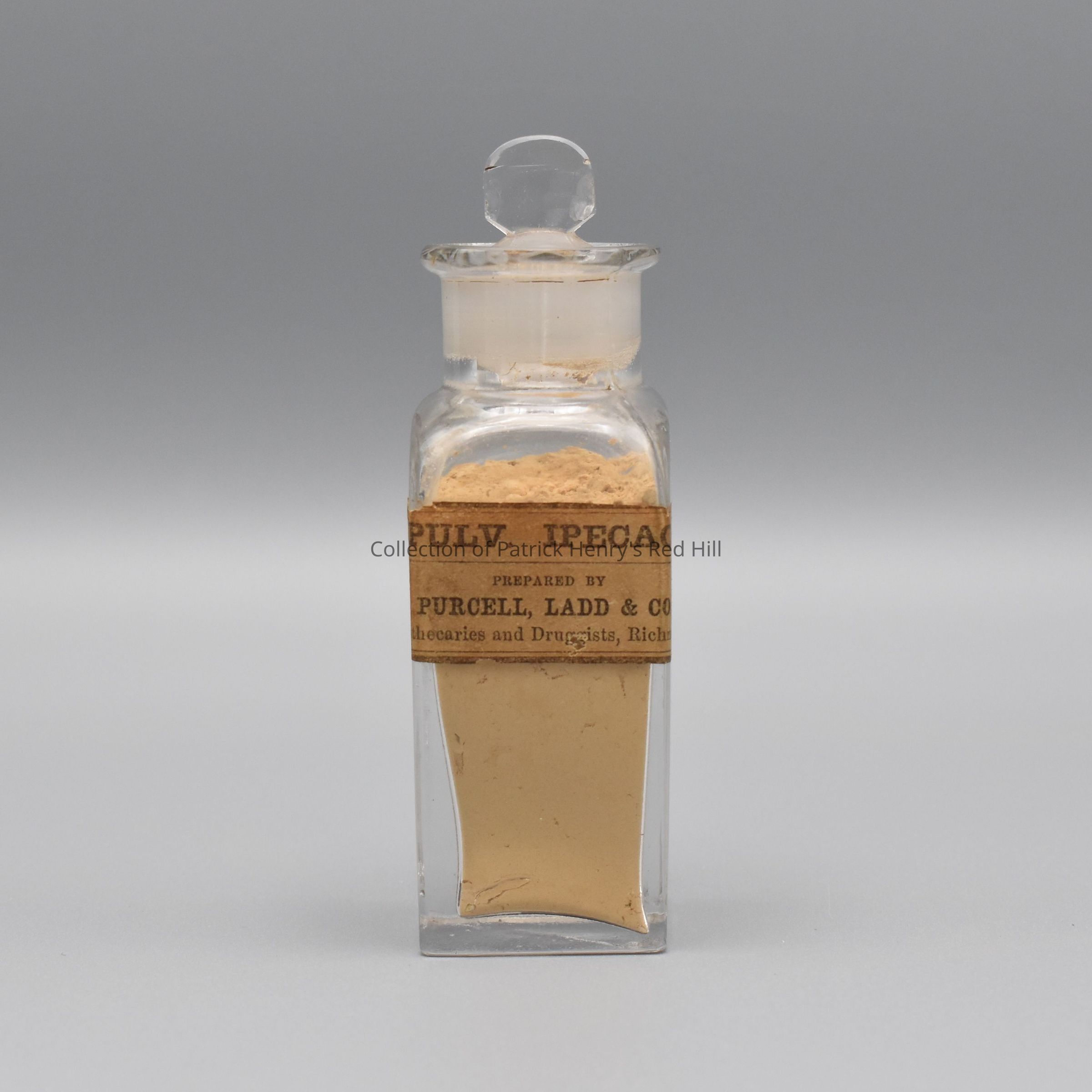Notes
This ipecac bottle comes from a larger set in the Henry family medicine chest (01.31.1).
Ipecac powder—full name ipecacuanha—comes from the root of a small tropical plant native to Bolivia and Brazil, and was used by the indigenous Brazilians to treat dysentery, an intestinal infection. This knowledge was brought to Europe by Portuguese colonizers. In the 18th century, it was realized that in small doses, ipecac could be used to induce sweating. In larger doses, it acts as an emetic. However, it is a mild poison, and there is a chance of overdose.
It eventually became available in a widely distributed syrup and was typically used to induce vomiting after the ingesting of poison. The manufacturing of ipecac syrup was discontinued in 2010 due to a lack of available raw materials and several studies pointing out its lack of effectiveness.
The bottle has a lid (01.31.3b).
This chest and its contents belonged originally to John (1796–1868) and Elvira McClelland Henry (1808–1875) during their years at Red Hill. The chest was passed down in the family to John and Elvira's daughter, Margaret Ann Henry Miller (1827–1881), and then to her daughter, Elvira Henry Miller (1850–1955). It was then given to Rose Miller Gammon Garrett (1946–) through her father, William Miller Gammon Sr. (1900–1970). William Gammon Sr. was a nephew to Elvira Miller. His daughter, Rose Garrett, is a third great-great-granddaughter of Patrick Henry.
On September 4, 2001, Rose Gammon Garrett donated the medicine chest (01.31.1) and its contents (01.31.2-25) to the Patrick Henry Memorial Foundation.
